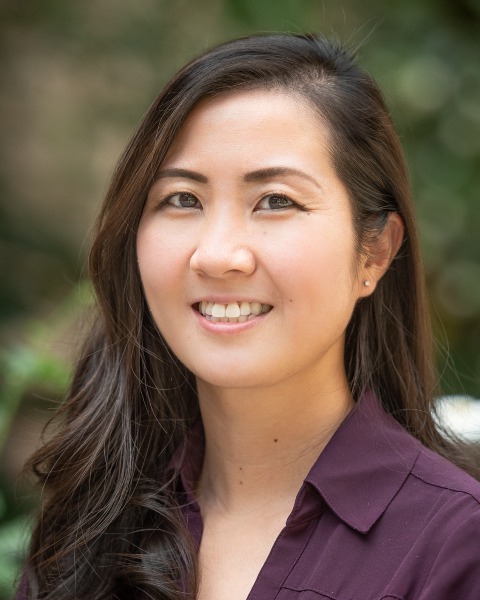Upper Gastrointestinal (lips to ileocecal valve, including esophagus and stomach)
E446: Lower Prevalence of Actionable Biomarker Targets in Gastric Cancer Peritoneal Carcinomatosis

Amy Y. Li, MD
Fellow Physician
University of California, Irvine, Department of Surgery, United States
Amy Y. Li, MD
Fellow Physician
University of California, Irvine, Department of Surgery, United States
Amy Y. Li, MD
Fellow Physician
University of California, Irvine, Department of Surgery, United States
Arsha Ostowari, MD (he/him/his)
Resident
UCI Medical Center
Laguna Hills, California, United States- KC
Kathryn T. Chen, MD
Attending Surgeon
Harbor-UCLA Medical Center, Division of Surgical Oncology, United States - VA
Veronica Arcila, BS
Research Student
Harbor-UCLA Medical Center, United States .jpg)
Shaina Sedighim, MD
Resident Physician
University of California, Irvine, Department of Surgery
Irvine, California, United States- FT
Fatemeh Tajik, MD
Research Associate
University of California Irvine, United States .jpg)
Oliver Eng, MD (he/him/his)
Associate Professor of Surgery
University of California, Irvine
Orange, California, United States- SH
Sung Chul (David) Hong, MS
Statistician
Dana-Farber Cancer Institute, United States - NU
Nataliya V. Uboha, MD, PhD
Associate Professor
University of Wisconsin, United States 
Shishir K. Maithel, MD, FACS
Professor, Department of Surgery
Winship Cancer Institute of Emory University
Atlanta, GA, United States- FD
Farshid Dayyani, MD, PhD
Professor of Medicine
University of California Irvine, United States - MS
Maheswari Senthil, MD
Professor of Surgery
University of California, Irvine, Department of Surgery
Irvine, California, United States
ePoster Abstract Author(s)
Submitter(s)
Author(s)
Outcomes of metastatic gastric cancer have improved with the introduction of novel targeted agents into treatment regimens based on tumor biomarkers: human epidermal growth factor receptor-2 (HER2), mismatch repair (MMR), and programmed death-ligand 1 (PD-L1). The prevalence of biomarkers in patients with peritoneal carcinomatosis (PC) has not been well characterized. We sought to study the distribution of these biomarkers in patients with PC to understand the prevalence and guide treatment decisions.
Methods:
All patients diagnosed with gastric or gastroesophageal junction adenocarcinoma at two academic institutions between 2010 and 2022 were identified. Patient demographics, clinical characteristics, and tissue-based biomarker (HER2, MMR, and PD-L1) information were collected. Patients with at least one biomarker result were included. HER2 amplification was defined as IHC 3+ or 2+, confirmed with FISH. As the National Comprehensive Cancer Network (NCCN) recommends use of immune checkpoint inhibitors for PD-L1 Combined Positive Score (CPS) ≥5, PD-L1 expression was grouped as CPS ≥1 and CPS ≥5 (actionable). PC was defined as radiographic or pathologic evidence of peritoneal involvement or malignant ascites. Chi-square tests were performed to analyze biomarker prevalence by PC status.
Results:
Overall, 355 patients were identified, of whom 297 (83.7%) had at least one biomarker result. One, two, or three biomarker results were available in 104 (35%), 38 (12.8%), and 155 (52.2%) patients respectively. The prevalence of HER2+ was 12.2% (n=35/288) and deficient MMR (dMMR) was 5.9% (n=11/188). Of the patients who had PD-L1 results (n=171), 85.8% (n=146) had PD-L1 CPS ≥1, among which 53.8% (n=92) had PD-L1 CPS ≥5. PD-L1 CPS ≥5 in the PC and non-PC group were 46.3% (38/82) vs.60.7% (54/89) respectively and trended towards significance (p=0.060). The distribution and co-expression of biomarkers based on PC status are as shown in Figure 1 for patients with all three biomarker results (n=155). Notably, patients with PC had a significantly lower incidence of any actionable biomarker targets (50%) compared to non-PC group (30.4%, p=0.013). Co-expression of HER2+ or dMMR with PD-L1 CPS ≥5 was low in both groups.
Conclusions:
Nearly 50% of gastric PC patients lack actionable biomarker targets rendering the combination of chemotherapy and targeted therapy not a feasible option. As such, novel biomarkers like Claudin 18.2 may provide additional targets in PC and require further investigation. These results suggest that there are underlying biologic differences between PC and non-PC group.
Learning Objectives:
- Upon completion, participant will be able to understand the prevalence of molecular biomarkers in gastric and gastroesophageal junction cancers.
- Upon completion, participant will be able to understand the difference in molecular biomarker expression between gastric/GEJ cancer patients with or without peritoneal carcinomatosis.
- Upon completion, participant will be able to understand the clinical implications of the biomarker distribution and treatment options for gastric/GEJ patients with peritoneal carcinomatosis.
